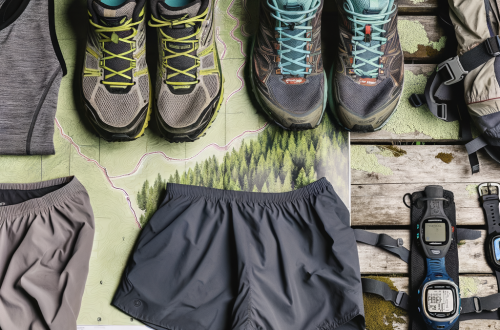
Is trail running harder than road running?
What Makes Trail Running Different from Road Running?
Trail running and road running might both involve putting one foot in front of the other, but the similarities often end there. The surfaces, surroundings, and even the mindset required can vary dramatically. Trail running typically takes place on natural terrain—think dirt paths, rocky inclines, forest trails, and mountain routes. Road running, on the other hand, sticks to paved surfaces like city streets, sidewalks, and asphalt paths.
Each style offers its own unique set of challenges and rewards. Understanding these differences is key to deciding which type of running suits your goals, fitness level, and preferences.
Is Trail Running Physically Harder?
In many ways, yes—trail running can be physically more demanding than road running. The uneven terrain forces your body to engage more stabilizing muscles, especially in your core, ankles, and glutes. You’re constantly adjusting your stride to navigate rocks, roots, and elevation changes.
Here are a few reasons why trail running often feels harder:
- Elevation gain: Trails often include hills and steep climbs that increase cardiovascular demand.
- Technical terrain: Navigating obstacles requires agility and balance.
- Slower pace: You may run slower, but your body is working harder.
That said, the softer surfaces of trails can be gentler on your joints, which is a big plus for long-term sustainability.
How Terrain Impacts Your Running Experience
The surface you run on plays a huge role in how your body responds. Road running offers a consistent, predictable surface, which makes it easier to maintain a steady pace and monitor your performance. It’s ideal for speed work, tempo runs, and structured training plans.
Trail running, by contrast, is unpredictable. One minute you’re running on packed dirt, the next you’re hopping over tree roots or splashing through a creek. This variability can make it harder to track pace, but it also keeps your mind and body engaged in a different way.
Key differences in terrain:
- Road: Flat, hard, consistent
- Trail: Uneven, soft, variable
Each terrain type trains your body differently, and many runners benefit from incorporating both into their routine.
Mental Challenges: Trail vs. Road
Running isn’t just physical—it’s mental. Trail running often demands more focus because you’re constantly scanning the ground for hazards. This mental engagement can be both a challenge and a benefit. It keeps your mind off fatigue but also requires more concentration.
Road running, while mentally easier in terms of navigation, can feel monotonous. The repetitive scenery and steady rhythm can lead to mental fatigue, especially on long runs.
In short:
- Trail running: Mentally stimulating, requires focus
- Road running: Mentally steady, easier to zone out
Injury Risk: Which Surface Is Safer?
Injury risk exists in both trail and road running, but the types of injuries differ. Road runners are more prone to repetitive strain injuries like shin splints, IT band syndrome, and runner’s knee due to the constant impact on hard surfaces.
Trail runners, on the other hand, face a higher risk of acute injuries such as ankle sprains or falls. The uneven terrain increases the likelihood of missteps, especially when fatigue sets in.
To reduce injury risk:
- Wear appropriate shoes for the terrain
- Strengthen stabilizing muscles
- Pay attention to form and fatigue
Calorie Burn and Fitness Gains Compared
Many runners wonder: does trail running burn more calories than road running? The answer is usually yes. The added resistance from hills, uneven surfaces, and technical terrain means your body works harder, even if your pace is slower.
Trail running also builds strength in muscles that road running doesn’t target as intensely. Your core, hips, and ankles all get a solid workout. Over time, this can lead to improved balance, coordination, and overall athleticism.
However, road running is excellent for building aerobic endurance and speed. It’s easier to track metrics like pace and distance, which is helpful for structured training.
Which Is Better for Beginners?
If you’re new to running, road running might feel more accessible. It’s easier to find flat, paved routes, and you can focus on building endurance without worrying about tripping over a root or climbing a steep hill.
That said, trail running can be incredibly rewarding for beginners who enjoy nature and don’t mind slowing down. The varied terrain can actually reduce boredom and make the experience more enjoyable.
Beginner tips for each:
- Road: Start with short distances, wear cushioned shoes, track your progress
- Trail: Choose well-marked, beginner-friendly trails, go slow, focus on form
Tips for Transitioning from Road to Trail Running
Thinking of making the leap from pavement to dirt? Here are some tips to ease the transition:
- Start slow: Trail running is more demanding, so reduce your mileage at first
- Invest in trail shoes: They offer better grip and protection
- Focus on effort, not pace: Your speed will naturally be slower on trails
- Practice technical skills: Work on balance and agility
- Hydrate and fuel: Trails often lack water fountains or stores
With time, your body will adapt, and you may find that trail running becomes your new favorite way to move.
Final Thoughts: Which One Should You Choose?
So, is trail running harder than road running? In many ways, yes—but that doesn’t mean it’s not worth the effort. Trail running challenges your body and mind in unique ways, offering a full-body workout and a deep connection with nature. Road running, on the other hand, is efficient, accessible, and great for building speed and endurance.
Ultimately, the best type of running is the one you enjoy most. Whether you’re pounding pavement or navigating forest paths, both forms offer incredible benefits. Why not mix it up and enjoy the best of both worlds?
Powered by: aiContent.live





